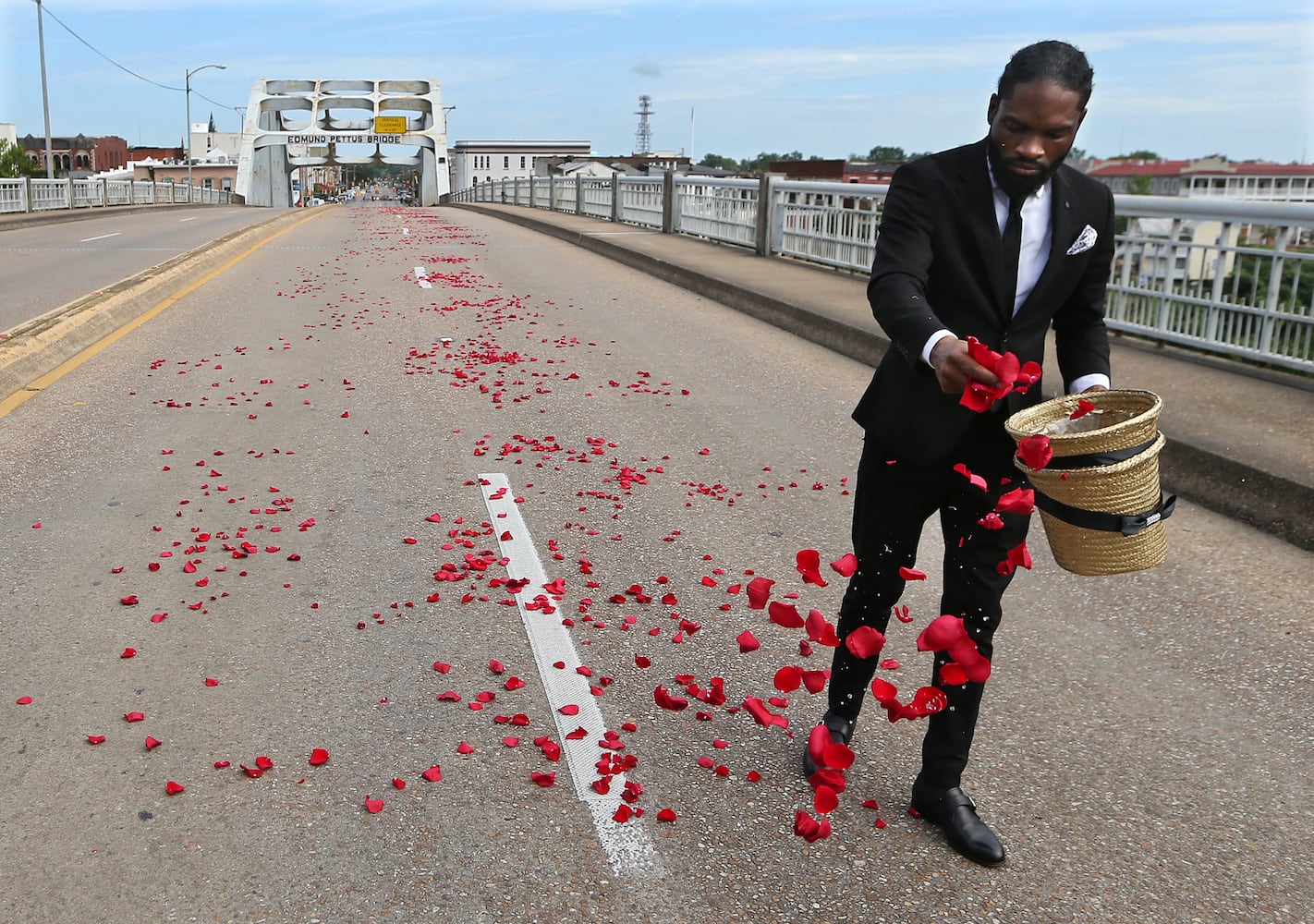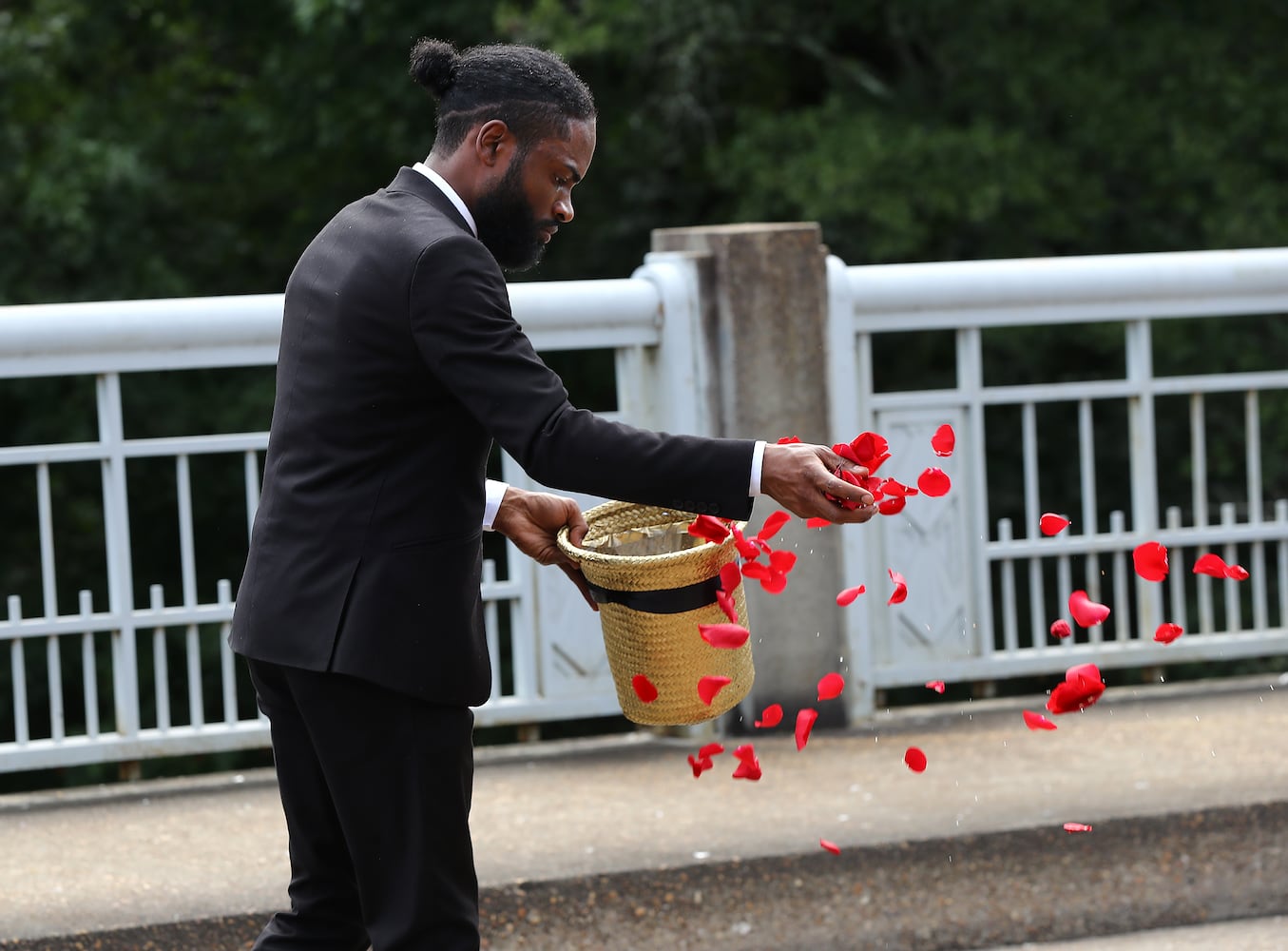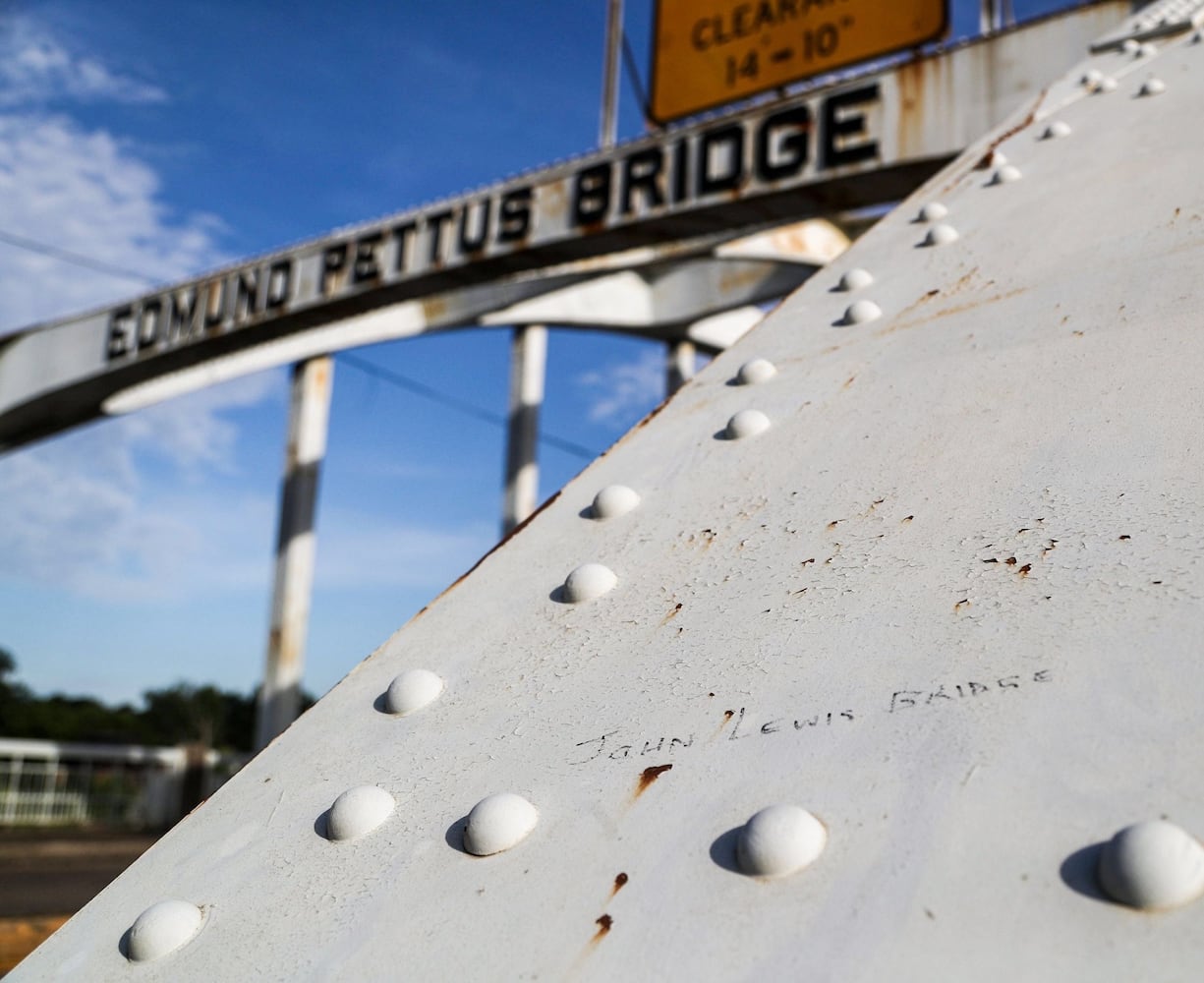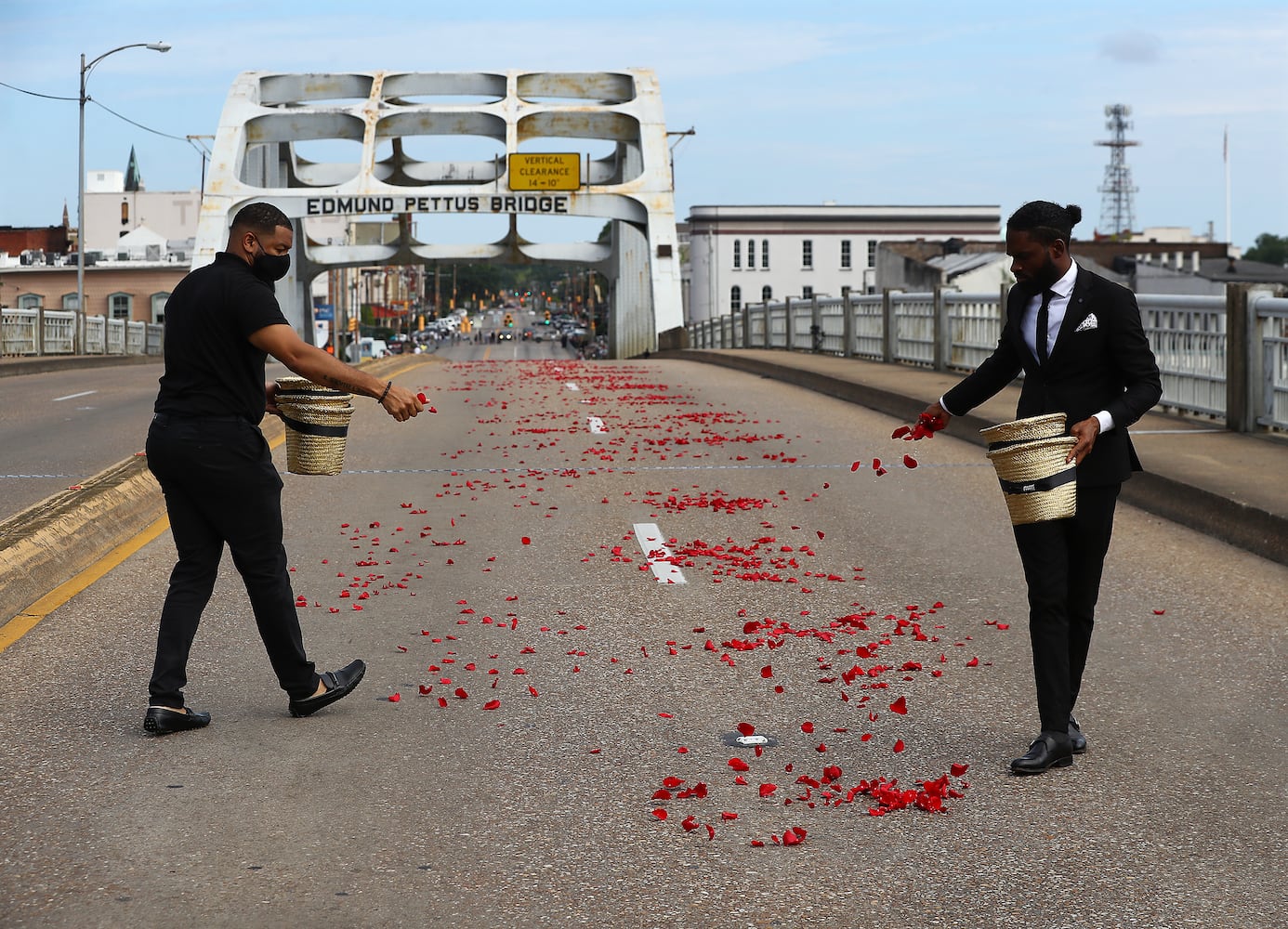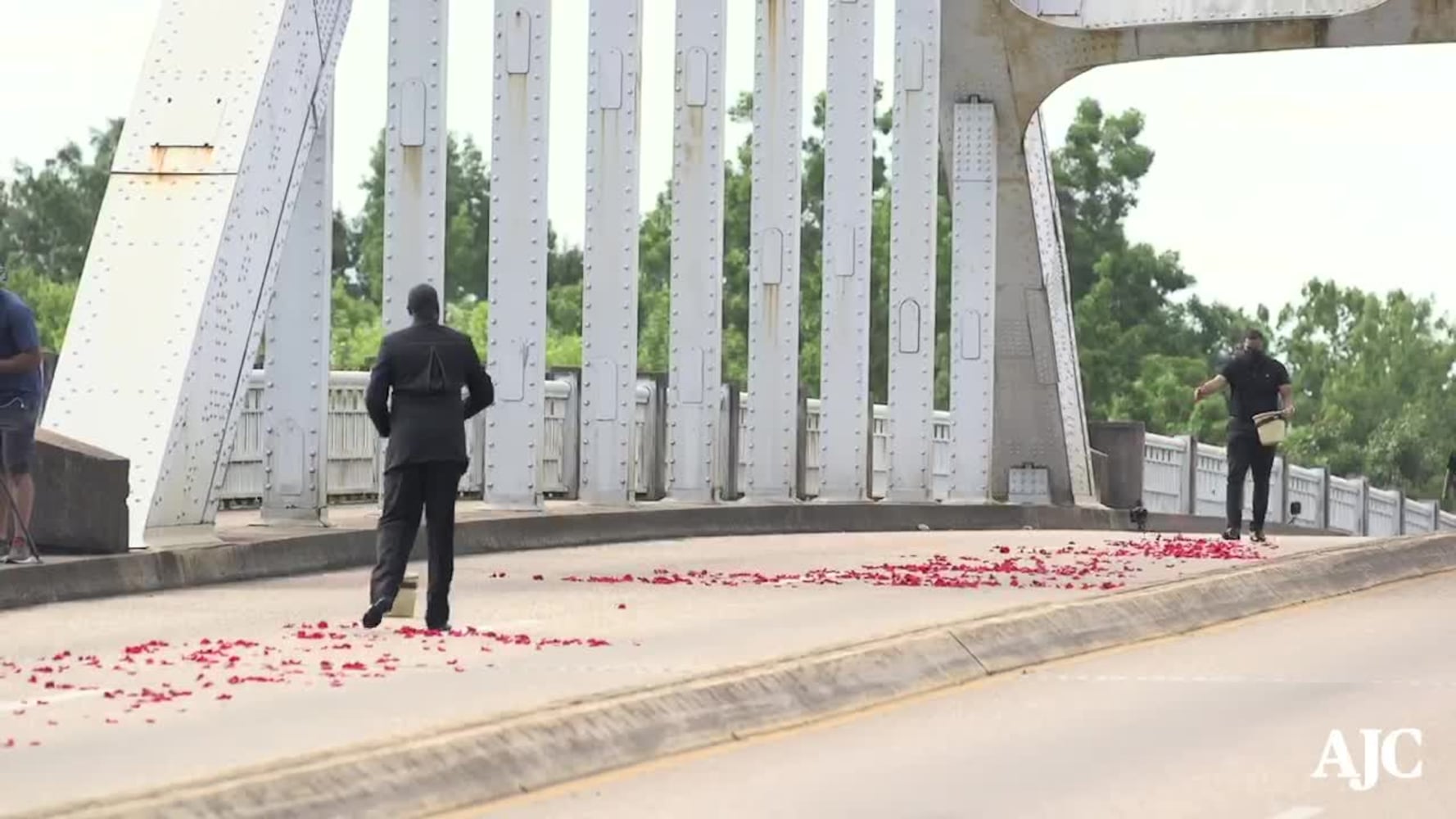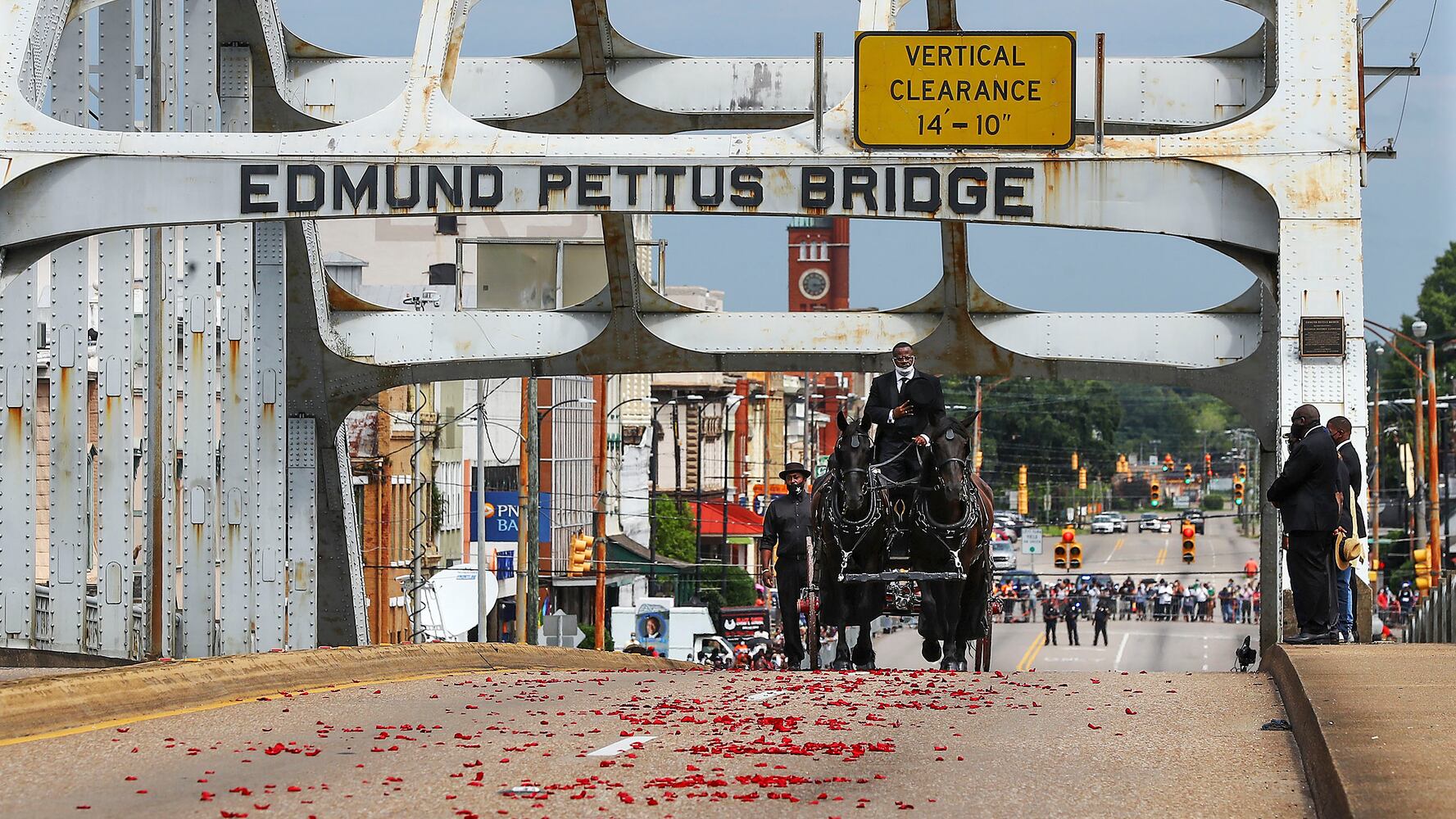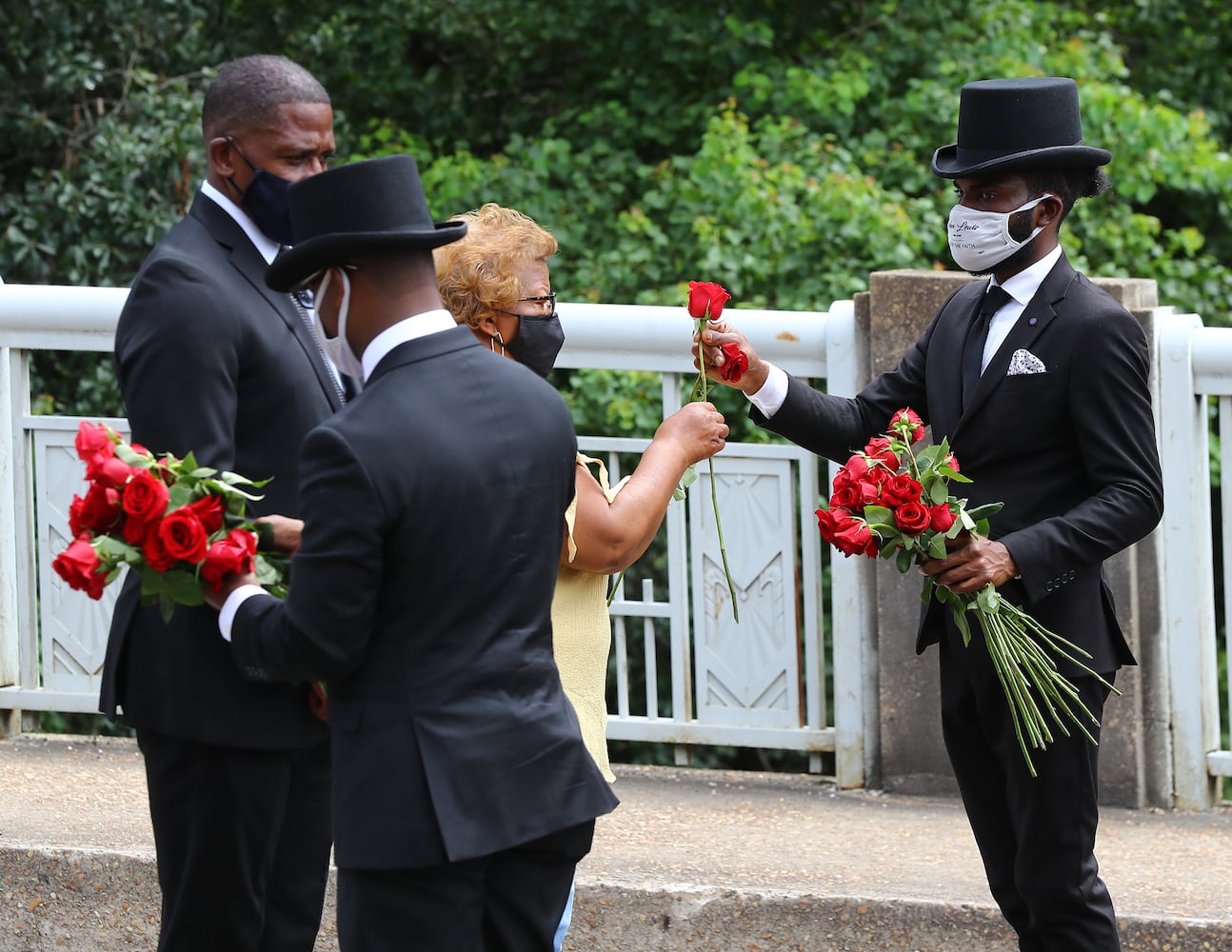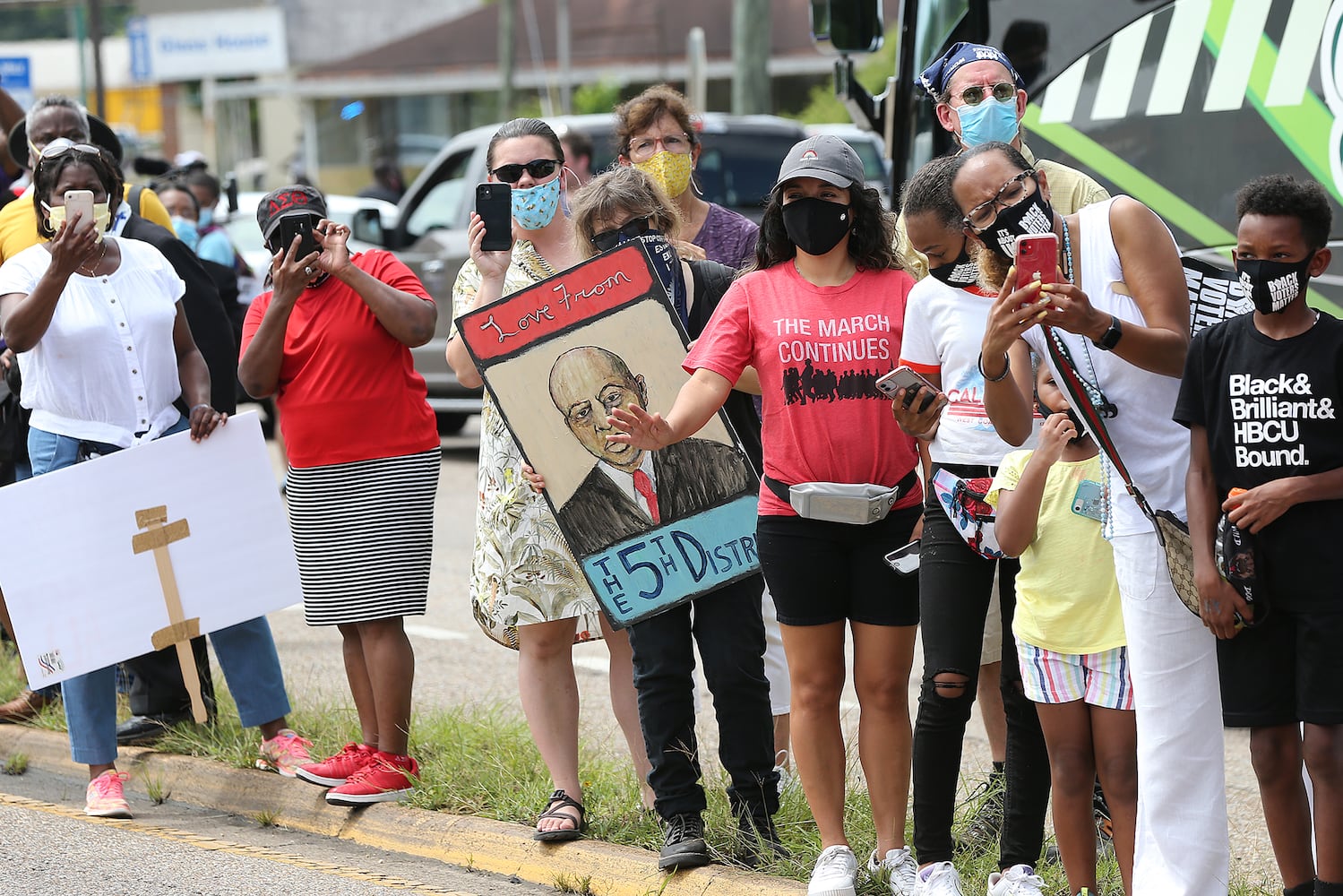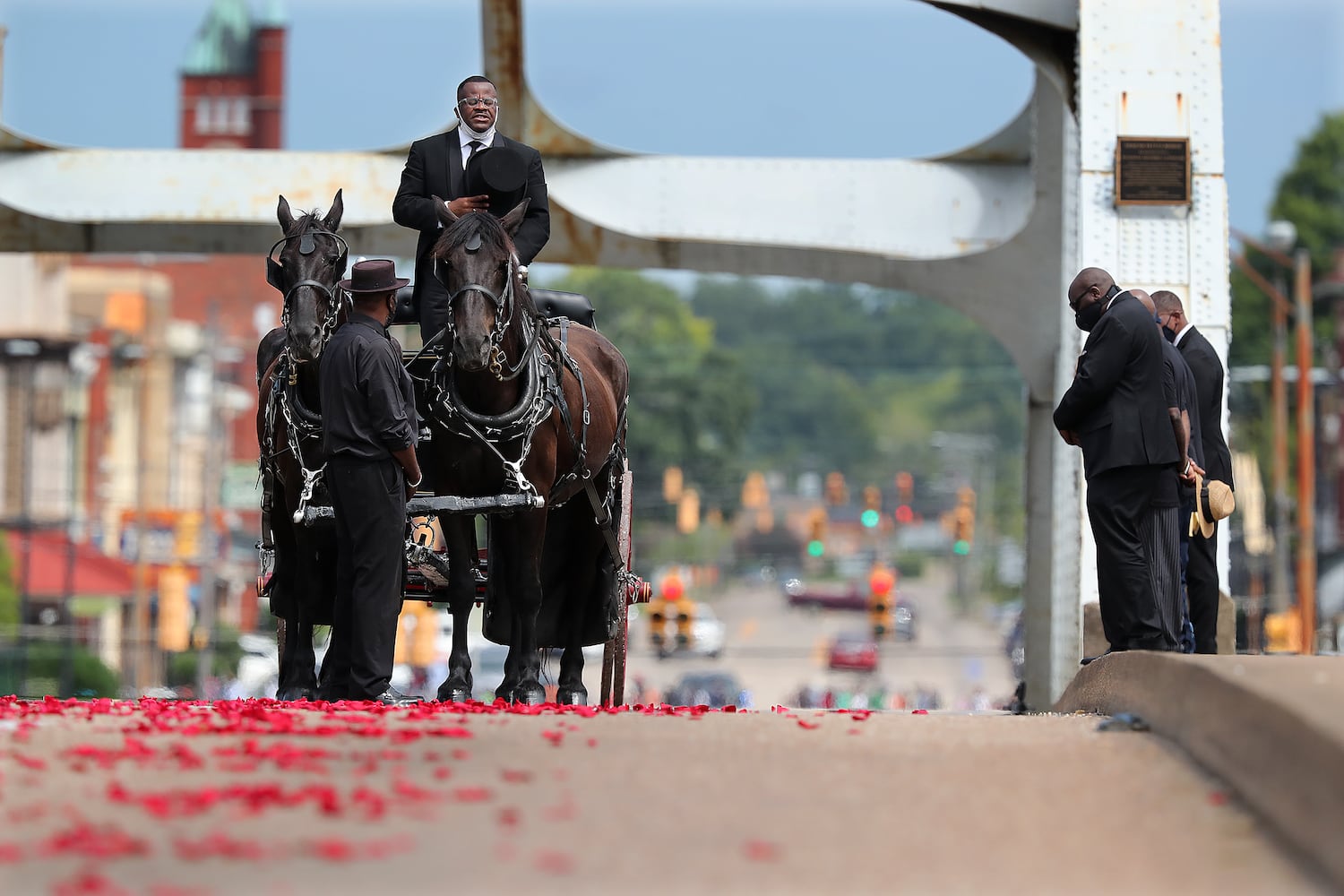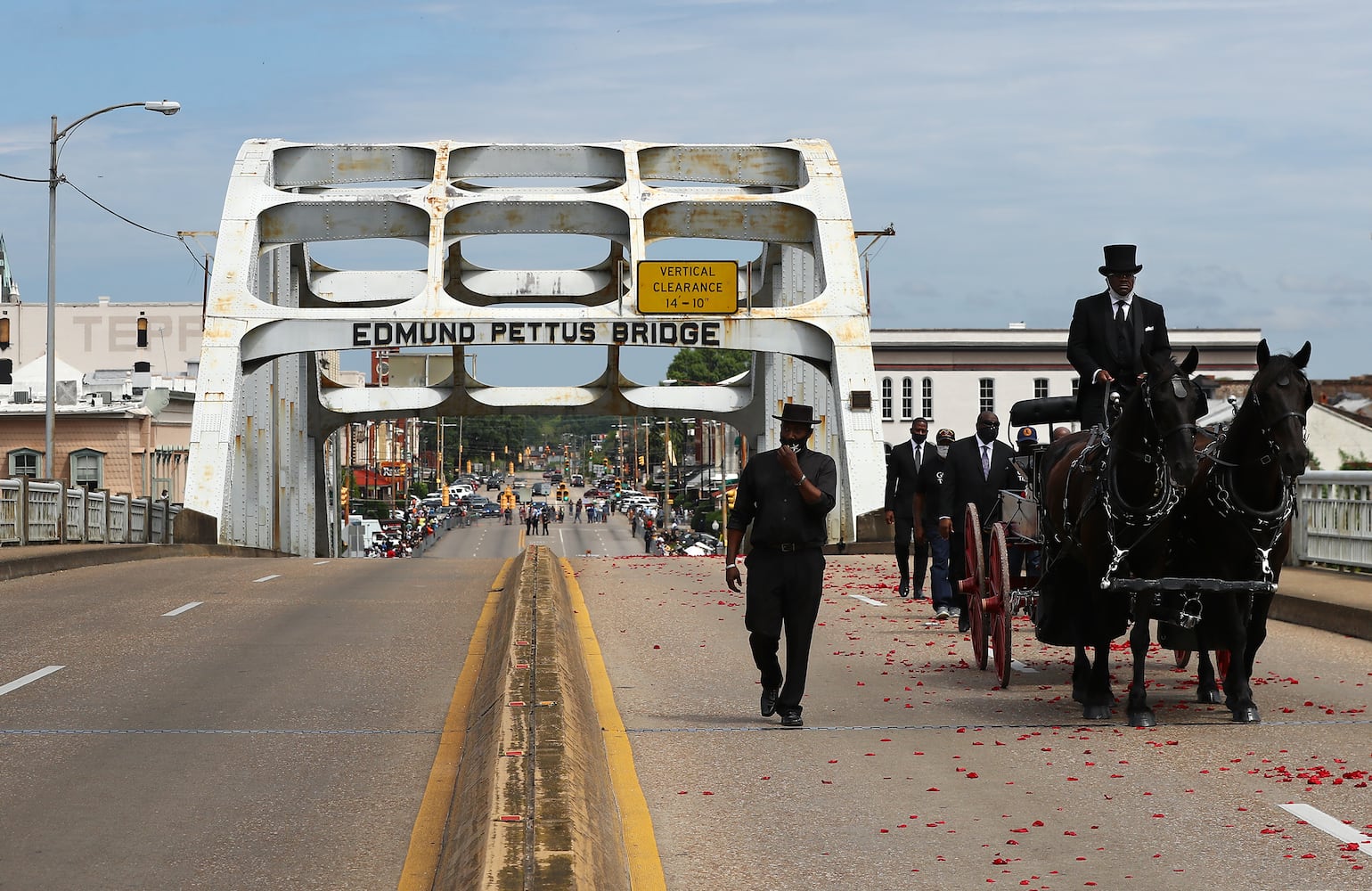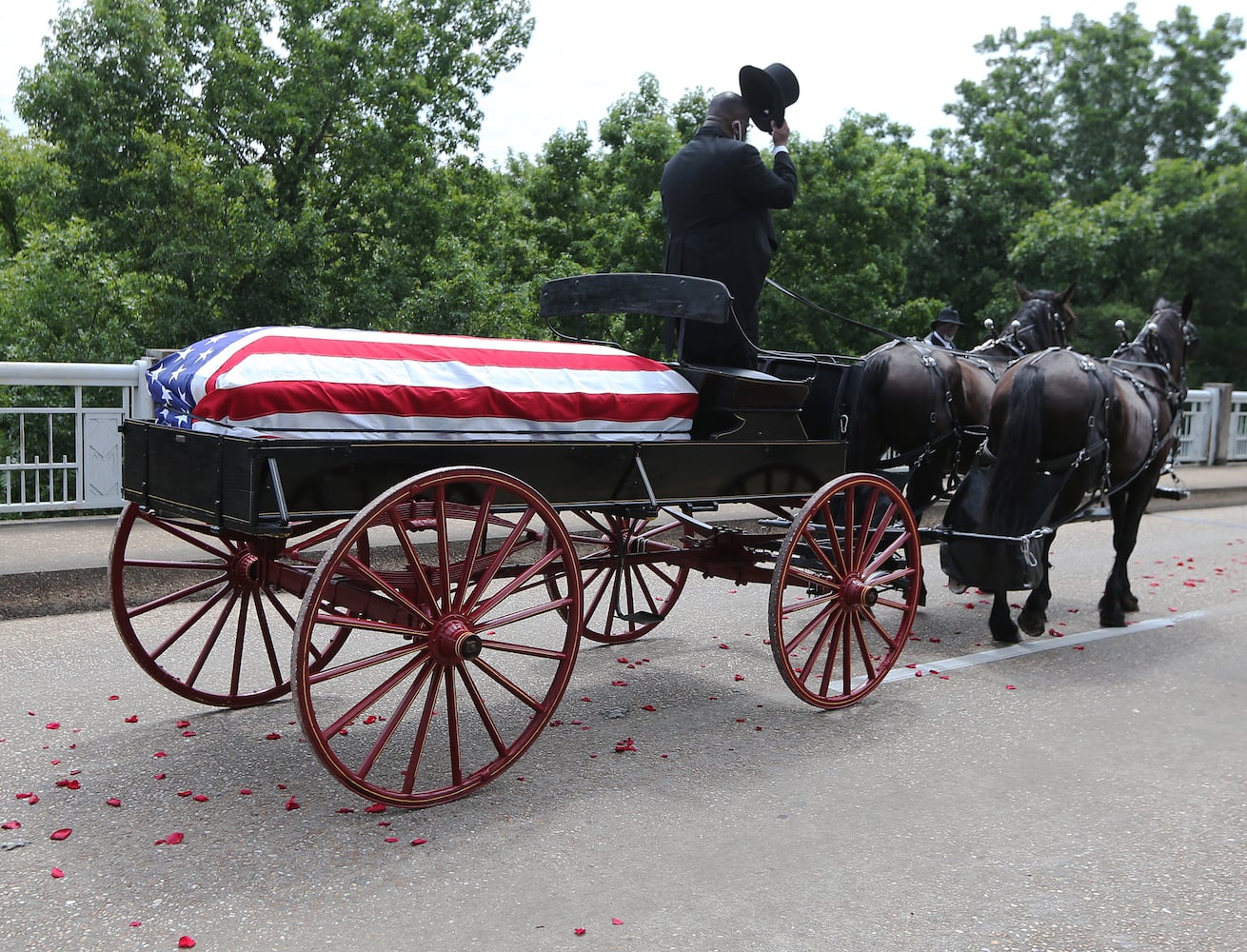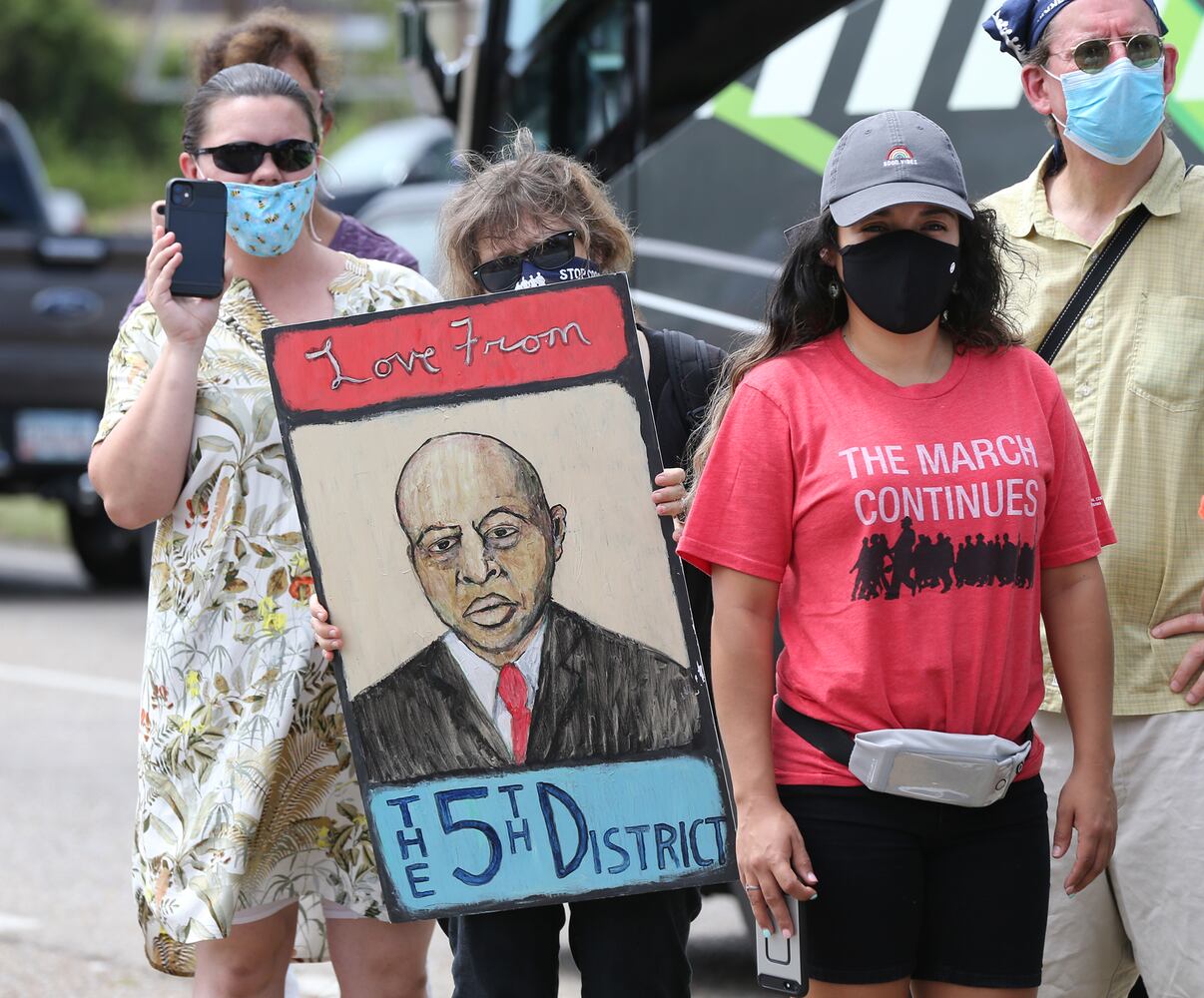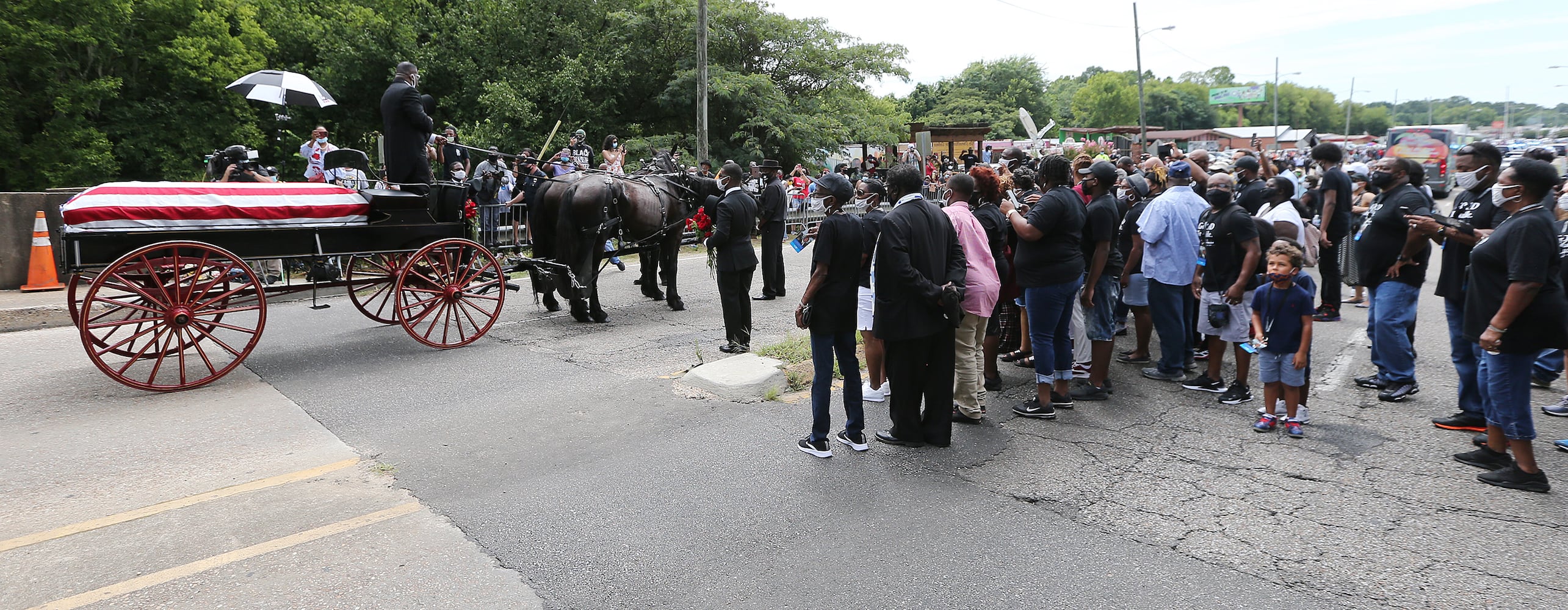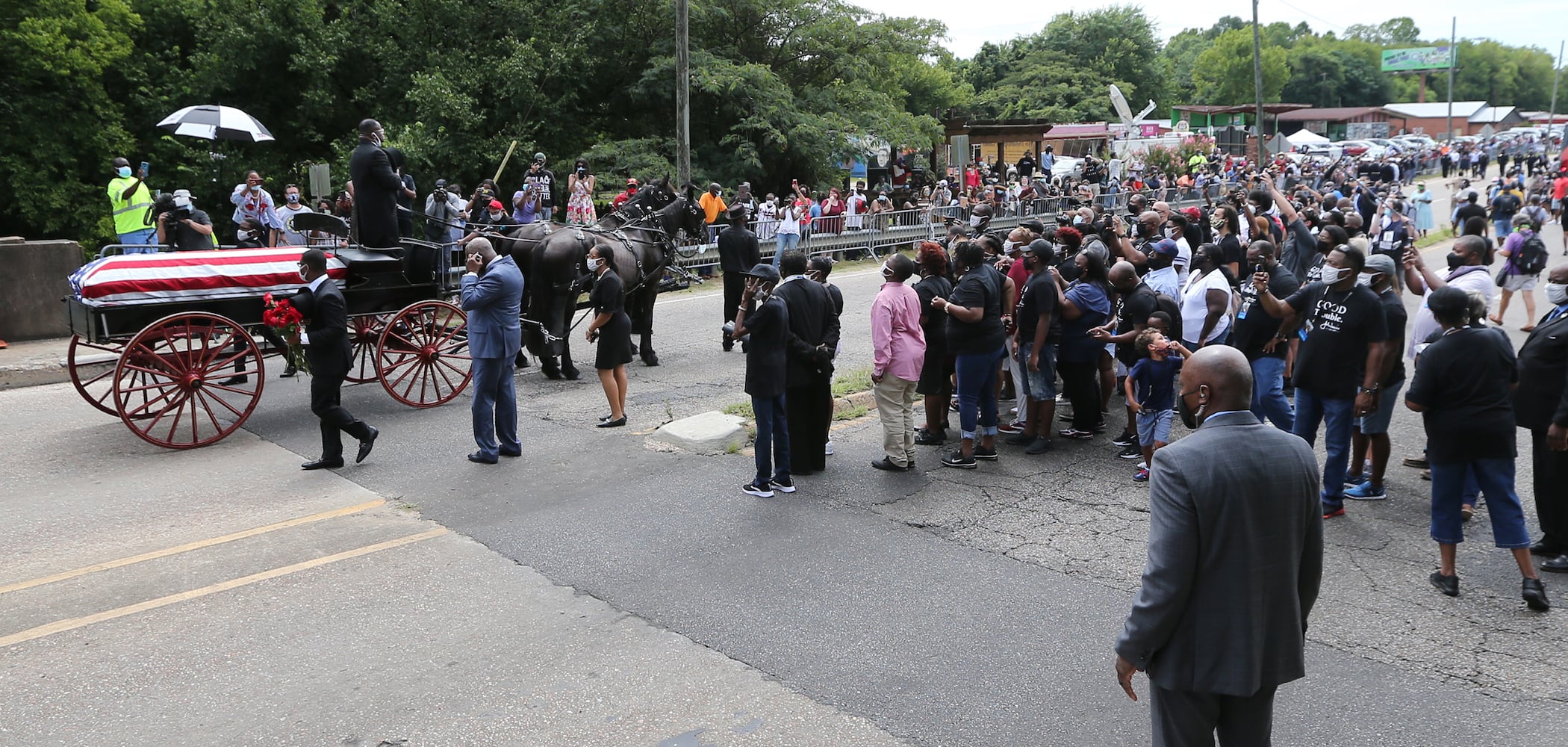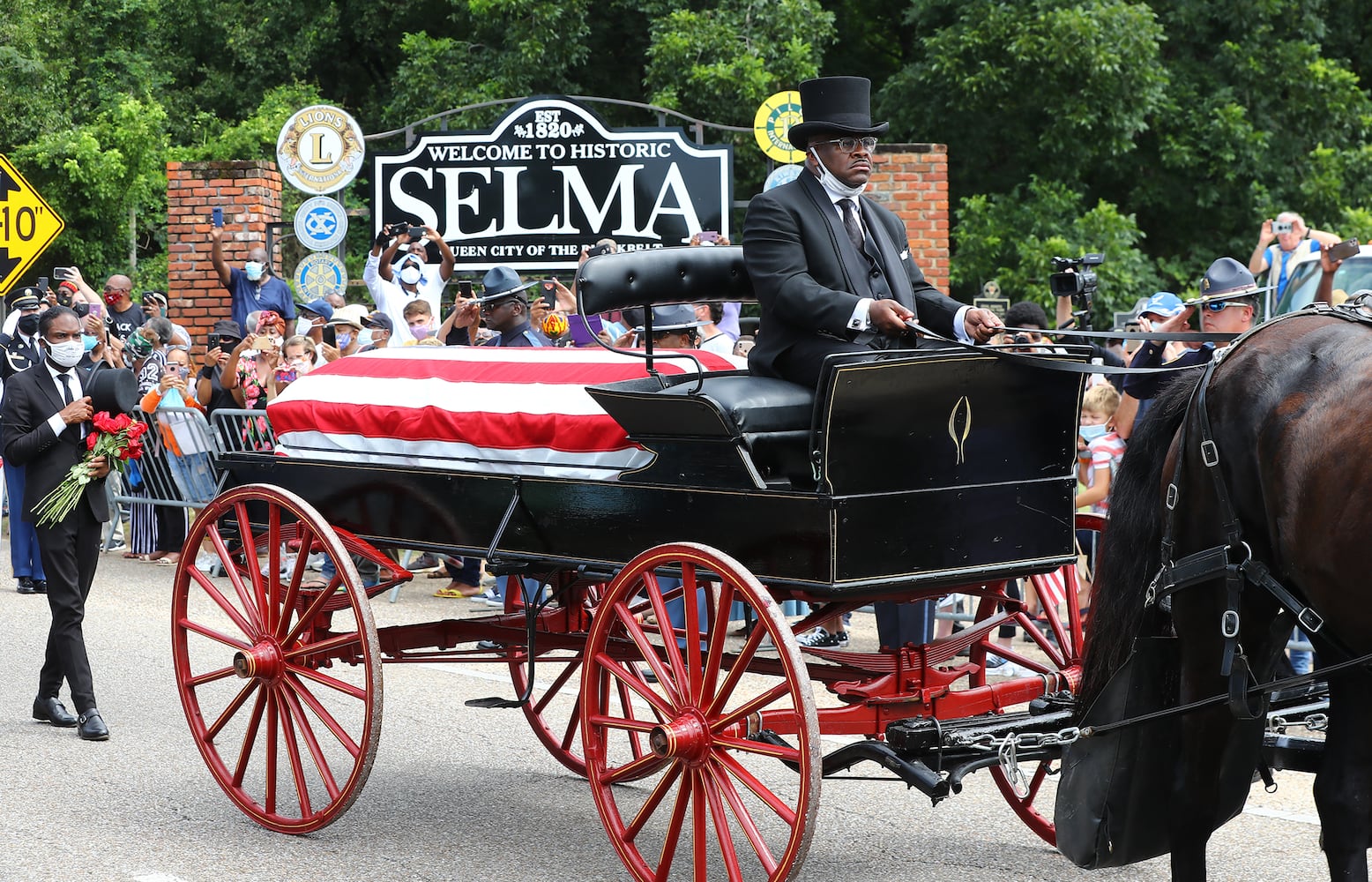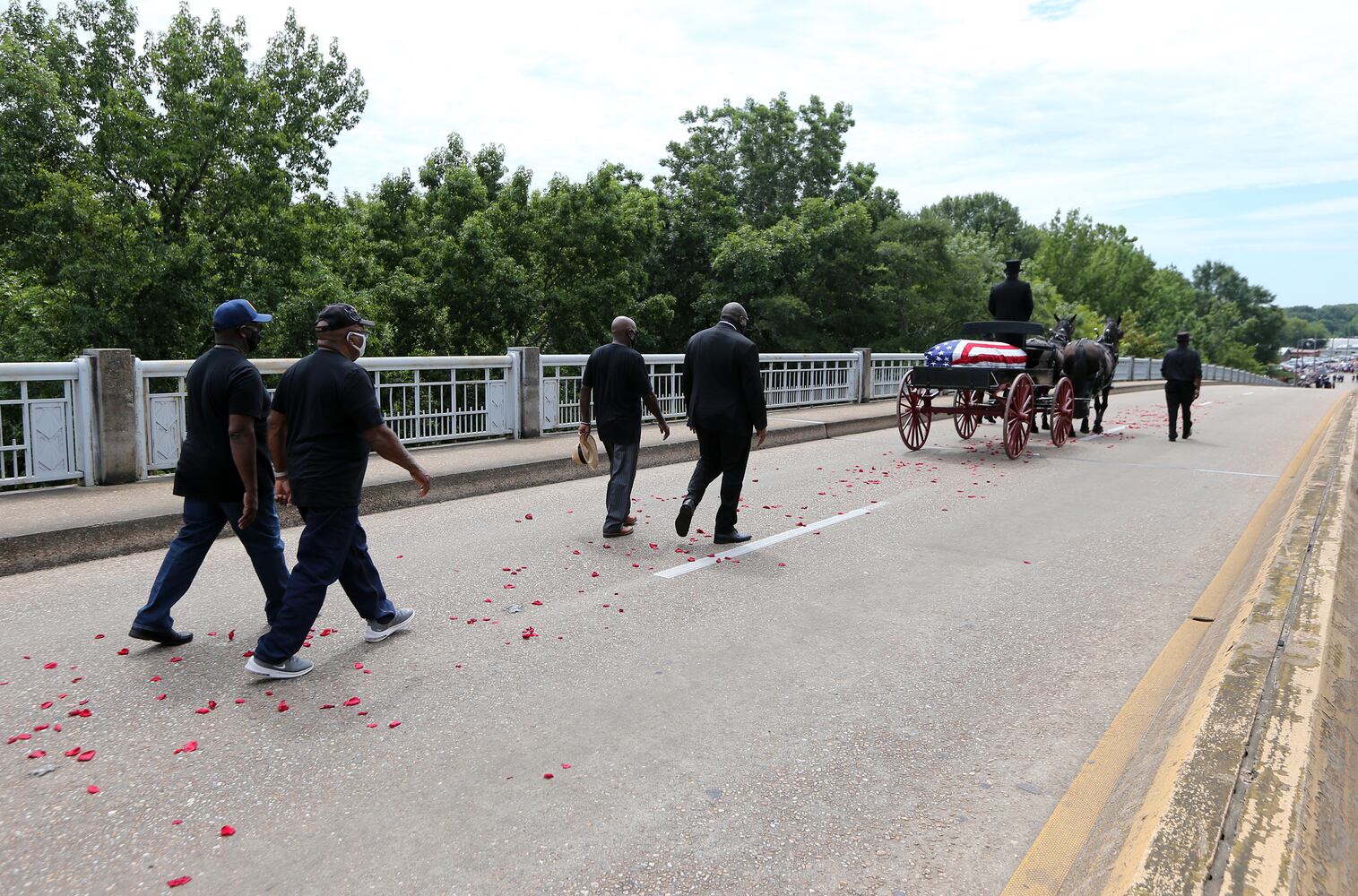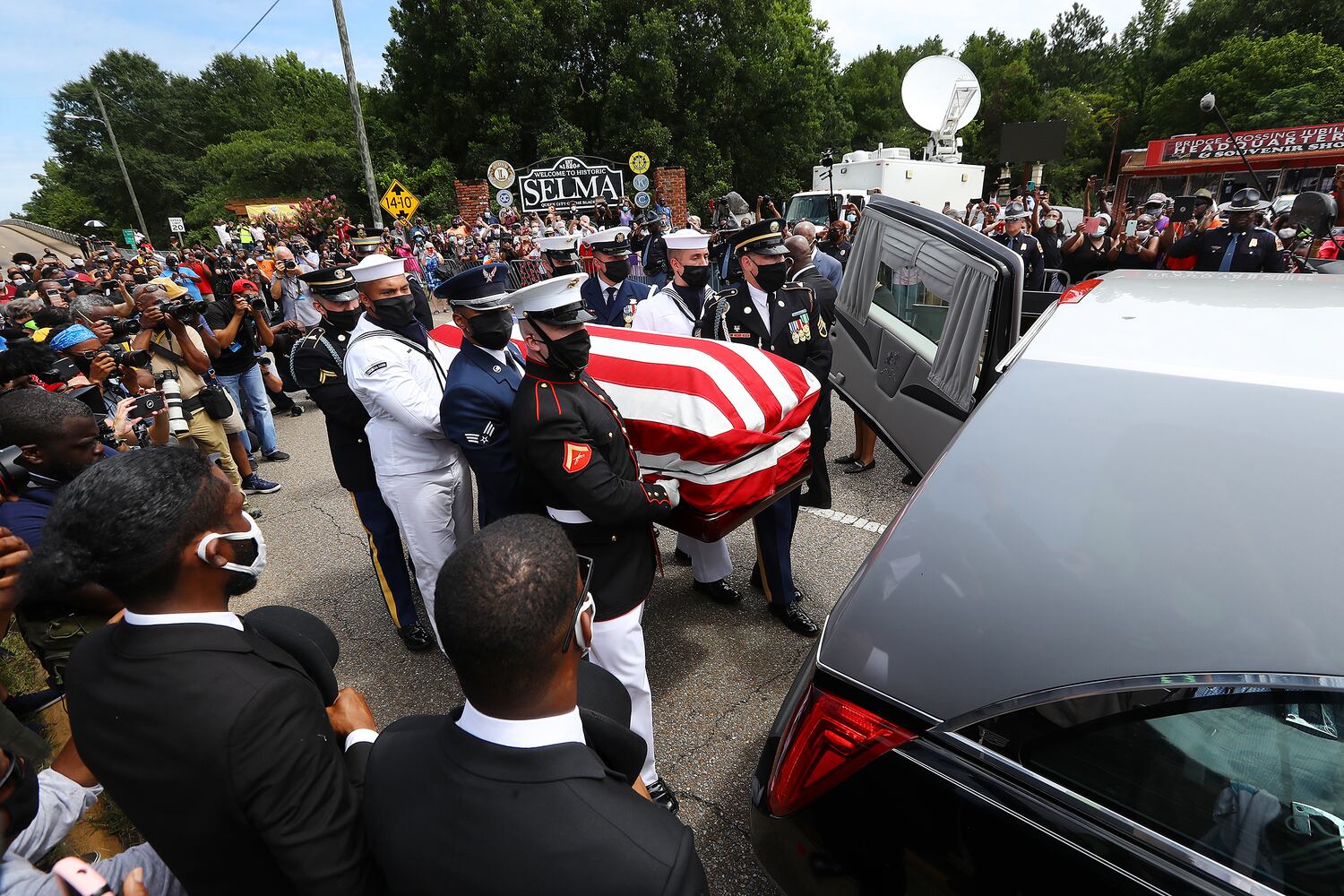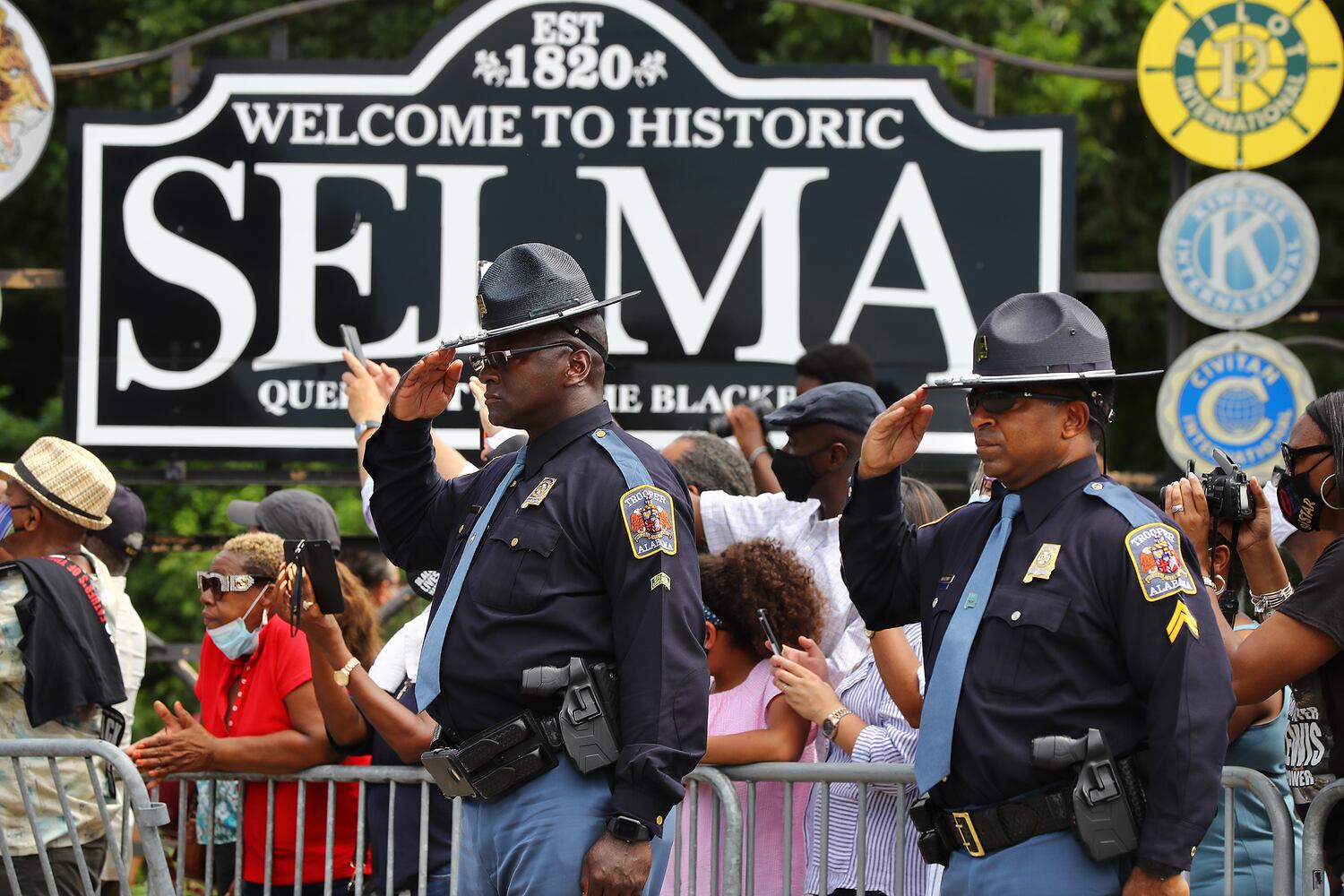SELMA, Ala. – Deanna Moton was 14 years old when she marched over the Edmund Pettus Bridge more than a half-century ago only a few feet behind the young man at the front of the line in a backpack and tan trench coat.
Moton watched that day, March 7, 1965, known as “Bloody Sunday,” as Alabama state troopers fired tear gas and bludgeoned marchers and John Lewis, knocking him unconscious.
That day galvanized her into a lifetime of activism and compelled the septuagenarian to travel back from Rock Hill, South Carolina, to watch Lewis’ coffin cross the Edmund Pettus Bridge one last time Sunday.
“Here we are together,” Moton said before his coffin with tears in her eyes and her hand on her chest. “Thank you. Thank you. Thank you. You took hits for the movement. You bled on that bridge for this movement. I am forever indebted to you.”
Hundreds joined her, lining Broad Street to say goodbyes to a civil rights icon who counseled presidents, spent 17 terms in Congress and was known the world over as a symbol of love, nonviolence and racial healing.
A horse-drawn caisson drew Lewis’ flag-draped casket from the nearby Brown Chapel A.M.E. Church, where the Selma march had begun. Unlike Lewis’ annual anniversary pilgrimages to the bridge, in which he led thousands of admirers behind him, the caisson crossed the bridge alone.
Red rose petals were scattered on its black asphalt path, a symbol of the blood shed 55 years earlier. Crowds that shouted “thank you” and “good trouble” as the carriage passed fell silent as it reached the bridge’s apex and stopped beneath the awning bearing Pettus’ name. The driver, Darrell Watkins, stood up, removed his top hat and held it to his heart.
Lewis’ surviving siblings and son, John-Miles Lewis, met the caisson there and followed it for the remainder of its journey.
On the other side of the Alabama River, Lewis’ extended family met it singing “We Shall Overcome.” A line of Alabama state troopers saluted the man whom their predecessors bloodied on the same ground 55 years earlier.
Credit: HYOSUB SHIN / AJC
Credit: HYOSUB SHIN / AJC
“It’s poetic justice that this time Alabama state troopers will see John to his safety,” said Congresswoman Terri Sewell, D-Ala., who spoke during a brief program ahead of the crossing.
The scene was a bookend to a career that spanned more than six decades, a moment designed to remind America of how far it’s come since “Bloody Sunday” pricked the nation’s consciousness, as Lewis often liked to say.
The attacks that Lewis, Moton and hundreds other civil rights protesters sustained that day opened white America’s eyes to the struggles of Black people, which it had long ignored. A week later, President Lyndon B. Johnson announced he would support legislation guaranteeing African Americans full voting rights. Months later, he signed the Voting Rights Act of 1965 into law.
The weight of Sunday’s events was lost to no one who converged on this small central Alabama river town, many wearing facemasks and t-shirts bearing Lewis’ face or signature catchphrases.
Jeraldyne Dorsey, 72, a Midway, Alabama, resident who watched the event with a friend and her daughter said, “He tried what we couldn’t try, he did what we couldn’t do.”
After the crossing, Lewis’ hearse traveled along the route marchers eventually took to Montgomery, where his body would lie in state through the evening in the Alabama Capitol.
In Selma, Moton had been disappointed to learn the public wouldn’t be allowed to cross the bridge with Lewis. But she was blown away when the caisson bearing his casket stopped in front of her for several minutes ahead of the ceremony.
Then she followed it to where she had to stop, and Moton quietly watched it make its way across the slightly rising bridge, where it seemed to fade into pale blue skies and bright sun, and out of view. She captured the moment on her iPhone.
A floral arrangement at the foot of the bridge — white lilies, roses and gladiolus, which traditionally represent strength, sincerity and integrity — was separated, with flowers given to those present. Moton was given white gladiolus.
Credit: Ryon Horne / Ryon.Horne@ajc.com
As she crossed the bridge at the end of the ceremony, she pulled petals from her flowers and let them fall onto the red rose petals. The fight, she said, continues.
“When George Floyd’s life was snuffed out and people saw it, it rekindled the human spirit of human life,” said Moton, a long time psychotherapist who has been active in voter registration efforts. “I think people see what we are doing is fighting not for civil rights but human rights.”
Patrice Houston, 57, made the journey from Atlanta to see Lewis’ final crossing.
“This is where it started,” she said. “This is not where it ends, but this is the last time he will cross this bridge and it was so important for me to be here to witness this.”
Staff writers Tia Mitchell and Ernie Suggs contributed to this article.
Monday and Tuesday’s events
The Lewis tributes now head to Washington, D.C. The theme for the next two days is “The Conscience of the Congress.”
Monday’s remembrance kicks off at 2 p.m. with a special ceremony in the Rotunda of the U.S. Capitol.
Since the Capitol is closed to the public due to COVID-19, Lewis will lie in state on the East Front steps of the U.S. Capitol between 3 p.m. and 9 p.m. on Monday and 8 a.m. and 10 p.m. on Tuesday. Lewis is the second-ever African American to lie in state on Capitol Hill.
